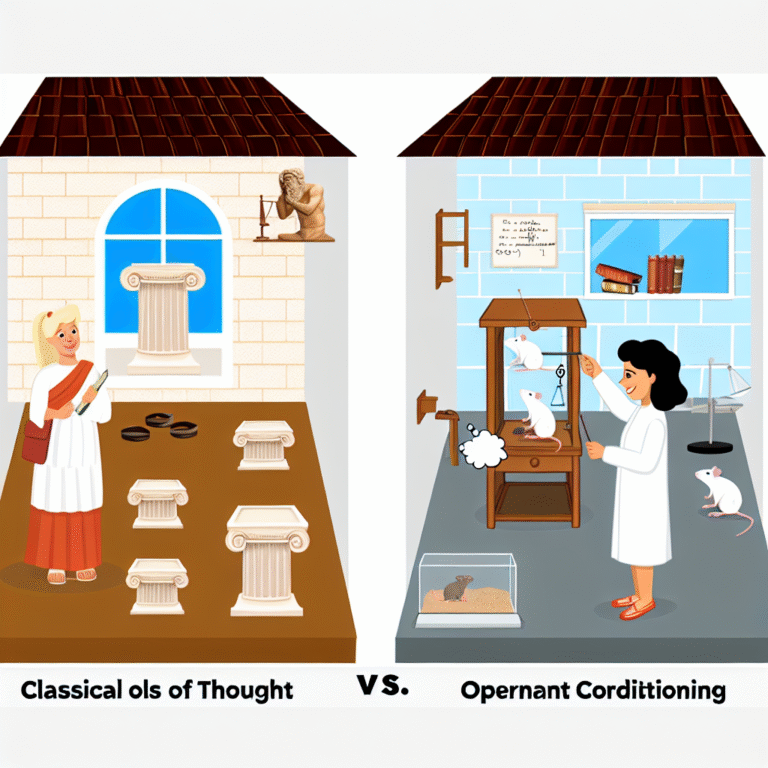
Rise and Shine: The Ultimate Guide to Foster Self-Confidence Among Your Team
Introduction
In today’s fast-paced world, fostering self-confidence within a team is essential for creating an atmosphere of innovation, resilience, and productivity. Self-confidence isn’t just an individual trait; it’s a collective asset that can elevate an entire organization. When team members believe in their abilities and feel empowered to express their ideas, the benefits ripple outward, resulting in improved collaboration, creative problem-solving, and enhanced overall performance.
This article provides unique insights into the strategies you can employ to nurture self-confidence among your team members, leading your organization not just to survive but to thrive. So, let’s embark on this journey as we explore how to Rise and Shine: How to Foster Self-Confidence Among Your Team!
The Importance of Self-Confidence in the Workplace
Self-confidence is crucial in any workplace environment. It directly affects an individual’s performance, engagement, and willingness to take risks. Teams characterized by self-assured individuals tend to demonstrate higher productivity levels, better morale, and greater innovation.
Why Does Self-Confidence Matter?
Research shows that confident employees are more likely to take initiative, push boundaries, and drive positive results. A study conducted by the National Institute of Mental Health found that self-confident teams are not only more productive but also more resilient in the face of challenges. Let’s unpack the importance of self-confidence further:
Enhanced Performance: Teams with high self-confidence are usually more productive. Confident individuals are more willing to take on challenges because they trust in their capabilities.
Fostering Innovation: When team members feel secure in their skills and ideas, they are far more likely to propose innovative solutions and contribute meaningfully to discussions.
Improved Team Cohesion: Confidence breeds a sense of security. Team members are more inclined to collaborate and support one another, which fosters a strong team spirit.
- Resilience to Change: In today’s ever-evolving business environment, self-confidence equips teams to adapt more swiftly to change. They are not paralyzed by uncertainty; rather, they see it as an opportunity for growth.
Clear Strategies to Foster Self-Confidence
Now that we understand the importance of self-confidence, let’s explore effective strategies to foster it among your team members.
1. Encourage Open Communication
One of the most effective ways to build self-confidence is by cultivating an environment of open communication. When team members feel comfortable sharing their thoughts and feedback, they are more likely to engage and express themselves.
Case Study: Google’s Project Aristotle
Google conducted a study, dubbed Project Aristotle, to identify the qualities of high-performing teams. They found that psychological safety—the belief that one will not be penalized or humiliated for speaking up—was the most significant factor in a team’s success. By fostering open communication, Google empowered its employees to share ideas freely, leading to increased self-confidence and innovative teamwork.
2. Provide Constructive Feedback
Feedback is a primary driver of growth. However, the manner in which feedback is delivered can significantly affect a team member’s confidence.
Recommendations:
- Be Specific: Instead of providing vague feedback, be specific about what worked well and what needs improvement.
- Balance Praise with Improvement: Focus on strengths while gently guiding areas for development. Acknowledge efforts before addressing weaknesses.
| Feedback Technique | Description | Example |
|---|---|---|
| Sandwich Method | Start with praise, provide constructive feedback, conclude with encouragement. | "You did a great job on this project; however, I think we could enhance our planning phase. Overall, your dedication is impressive!" |
| Real-Time Feedback | Provide immediate feedback to reinforce learning and confidence. | After a presentation, acknowledge what they did well right away. |
3. Celebrate Achievements
Recognizing team members’ accomplishments can significantly boost their self-esteem and reinforce their sense of capability. Celebrating even small wins fosters a culture of positivity and encourages risk-taking.
Case Study: The Ritz-Carlton
The Ritz-Carlton is renowned for delivering exceptional service, but what many don’t know is that they celebrate employee achievements regularly. Whether it’s a simple shout-out in a team meeting or an award for outstanding service, this practice not only enhances individual self-confidence but also signals to the team that their contributions matter.
4. Provide Opportunities for Growth
Encouraging employee development through training and upskilling can significantly enhance self-confidence. When team members see progress in their skills, their self-assurance grows.
Recommendations:
- Skill Development Workshops: Host workshops to improve specific skills or introduce new technologies.
- Mentorship Programs: Pair less experienced employees with mentors to guide them in their career development.
5. Create a Supportive Team Environment
Building a supportive team culture is essential for nurturing self-confidence. Here are several strategies to build such an environment:
- Organize team-building activities that emphasize trust and teamwork.
- Foster a culture where mistakes are seen as learning opportunities, not failures.
Case Study: Zappos
Zappos has become famous for its strong company culture, which emphasizes support and camaraderie. The organization regularly holds team-building activities and has a no-blame policy for mistakes, allowing employees to take risks without fear of negative repercussions.
Visualizing Self-Confidence Growth
Below is a chart that shows the correlation between self-confidence levels and organizational performance metrics:
| Self-Confidence Level | Employee Engagement (%) | Innovation Rate (%) |
|---|---|---|
| Low | 50 | 10 |
| Medium | 75 | 25 |
| High | 90 | 40 |
As seen in the table, a higher level of self-confidence in team members correlates significantly with increased engagement and innovation rates in the organization.
Conclusion
To truly harness the potential of your team, understanding how to foster self-confidence is vital. Incorporating open communication, providing constructive feedback, celebrating achievements, creating growth opportunities, and cultivating a supportive environment will not only enhance individual performance but also enhance team dynamics positively.
In summary, Rise and Shine: How to Foster Self-Confidence Among Your Team is not just a strategic necessity; it is an investment in your organization’s future. As leaders, it is our responsibility to nurture self-assured teams that drive innovation and excel in performance.
Let’s strive to create a world where our teams do not just rise but shine brightly, showcasing their potential and making impactful contributions to your organization.
FAQs
1. What are some signs that my team lacks self-confidence?
Common signs include hesitance in decision-making, reluctance to share ideas, low morale, and high levels of stress. Team members may also frequently ask for validation from others rather than trusting their judgment.
2. How can I assess the self-confidence levels within my team?
Conduct anonymous surveys to gauge team members’ feelings about their contributions, ask for honest feedback in one-on-one meetings, or observe the dynamics during team discussions to assess confidence levels.
3. Is it possible to boost self-confidence in a team that has a history of low morale?
Yes, it is possible. Start by implementing small changes, such as enhancing communication and gradually recognizing and celebrating small wins. Over time, these changes can lead to significant improvements in overall morale and confidence.
4. How often should I provide feedback to my team?
Feedback should be ongoing. Regular check-ins and constructive feedback during projects can help maintain a growth mindset within the team.
5. What can I do to build a culture of psychological safety?
Encourage openness by modeling vulnerability as a leader, promote respectful dialogue, and reinforce the idea that failure is a learning opportunity. Celebrate contributions and individual differences to further nurture a culture of psychological safety.
By taking these actionable steps and fostering self-confidence among your team, you are not just shaping better employees but also nurturing empowered individuals capable of driving your organization towards success. Together, let’s rise and shine!
















